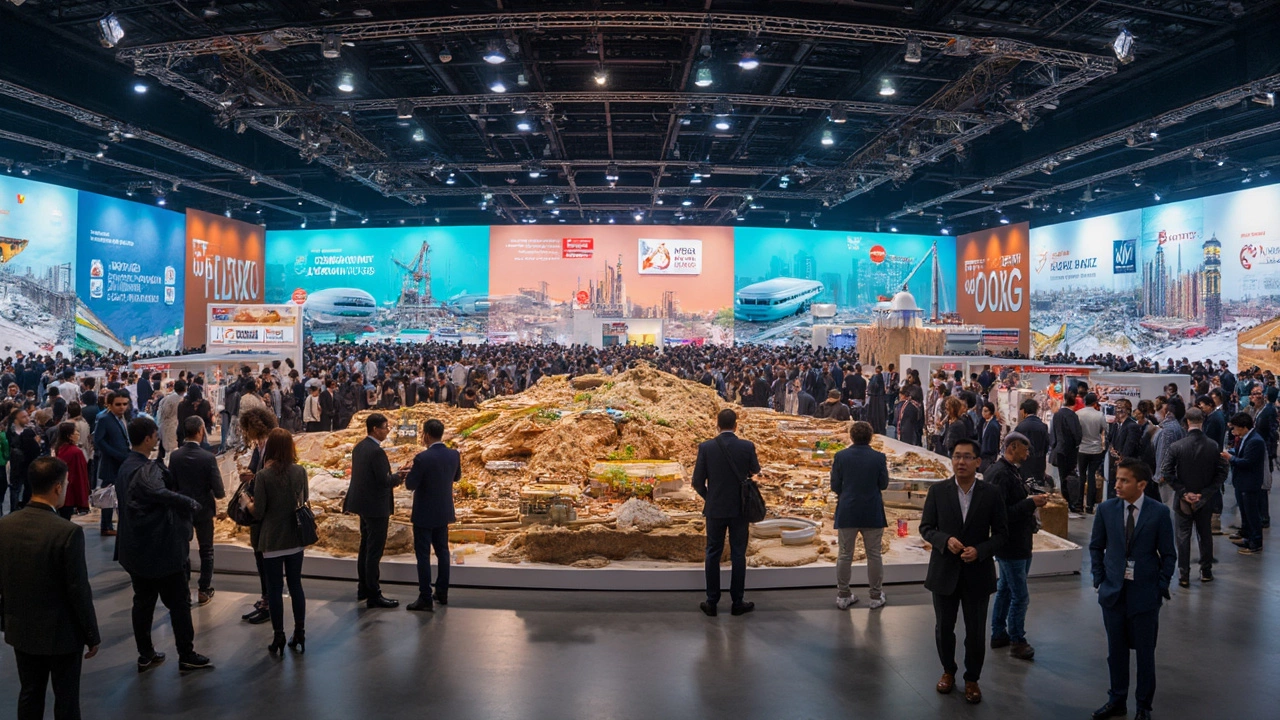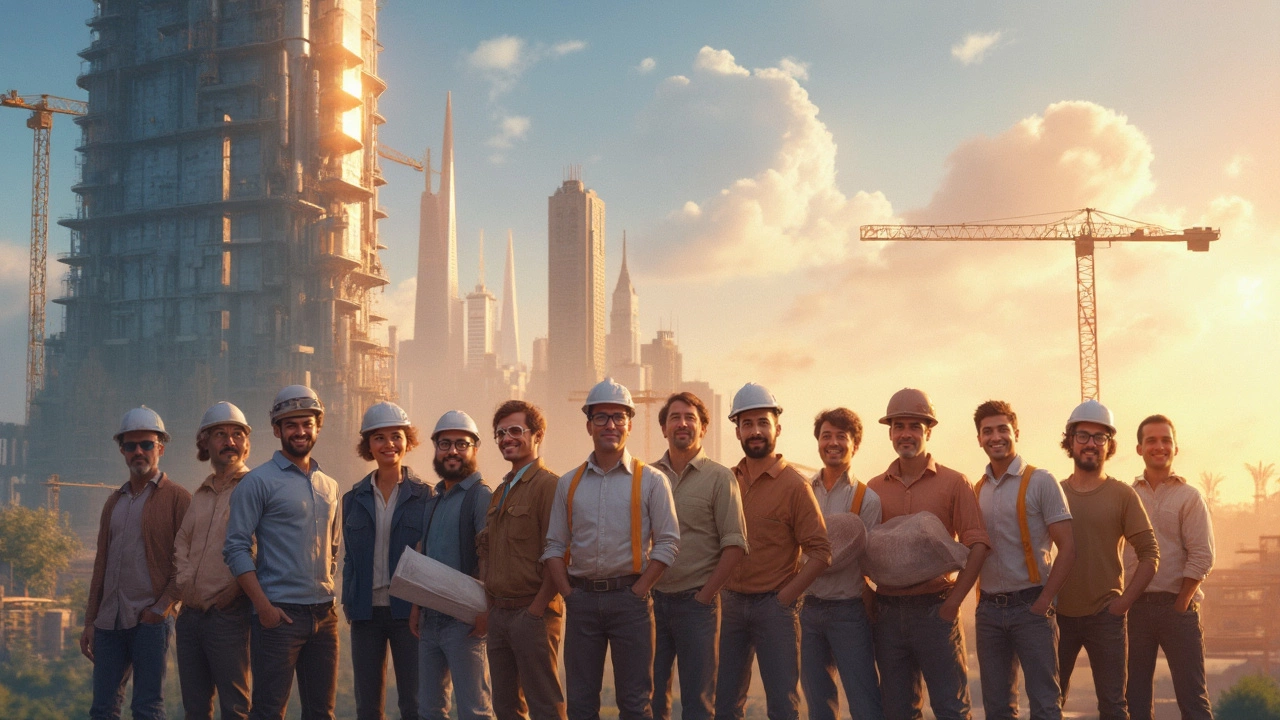World's Top Construction Giants: The 10 Biggest Construction Companies of 2025

Imagine waking up in a city where the tallest skyscraper, the most complex bridge, or even the high-speed train station was built by a company you’ve never heard of. The truth is, a handful of construction giants shape much of how our cities look, grow, and function. They lay the foundations for new economies and are the muscle behind anything from luxury hotels in the Middle East to bullet train corridors in Asia. But who exactly are these global heavyweights? And what sets them apart from the rest of the field?
The Powerhouses Behind Mega-Projects
Every time you see a jaw-dropping skyline or an engineering marvel shared on social media, there's a good chance one of these top 10 construction companies made it happen. Let's talk about some names making waves in 2025: China State Construction Engineering Corporation (CSCEC), Vinci, ACS Group, Bouygues, and Skanska—these aren’t just big on paper; they’re behind the most expensive, complex, and ambitious projects you can imagine.
CSCEC, for instance, isn't just China's largest construction company—it’s the world’s biggest, period. The company rakes in more than $300 billion in revenue annually and employs over 300,000 people. Sounds massive? They’re the masterminds behind projects like Beijing Daxing International Airport—dubbed the “Starfish” for its unique design—and countless high-rise towers popping up across Asia and Africa. Most people don’t know that CSCEC operates in over 100 countries and is a go-to for infrastructure in Africa, Southeast Asia, and the Middle East, too.
Europe’s fingerprints are all over massive construction moves, as well. Vinci, based in France, isn’t just about bridges and highways. They’re behind the iconic Stade de France and the expansion of the London Gatwick Airport. Vinci clocked revenues of more than $60 billion last year and invests heavily in sustainable building techniques—a clever move since governments and clients demand greener construction every year.
Zoom in on Spain, where ACS Group has put Madrid on the map for engineering prowess. But they don’t just build in Spain. Think about a $2.5 billion toll road in Texas or the $3.7 billion Sydney Metro project—ACS is there. Their adaptability shows up in their annual revenue, which was around $38 billion last year, making them a truly global powerhouse.
Table: A Quick Look at 2025's Top 10 Construction Titans
| Company | Country | 2024 Revenue (in $Bn) | Major Projects | Employees |
|---|---|---|---|---|
| China State Construction Engineering Corporation (CSCEC) | China | 311 | Beijing Daxing Airport, Africa Infrastructure | 300,000+ |
| Vinci | France | 61 | Stade de France, London Gatwick Expansion | 272,000 |
| ACS Group | Spain | 38 | Sydney Metro, US Toll Roads | 180,000 |
| Bouygues | France | 41 | Channel Tunnel, Paris Metro | 129,000 |
| Skanska | Sweden | 17 | MetLife Stadium, LaGuardia Airport | 33,500 |
| PowerChina | China | 72 | Hydroelectric Dams, Expressways | 145,000 |
| Strabag | Austria | 20 | Gotthard Base Tunnel, Silesia City Center | 73,000 |
| Bechtel | USA | 19 | Crossrail London, Hoover Dam Modernization | 55,000 |
| China Communications Construction Company (CCCC) | China | 100 | Hong Kong-Zhuhai-Macau Bridge, Port Projects | 120,000 |
| Hochtief | Germany | 30 | Elbphilharmonie, Berlin Brandenburg Airport | 47,000 |
Building big isn’t always about size, though—it’s about skill and specialization. While Skanska (Sweden) isn’t the largest, they shine in project management, especially when American airports or energy-efficient hospitals are on the table. A cool stat: in the past year, more than 80% of its global projects had a significant sustainability component, the highest among all top builders in the northern hemisphere.
Don’t just think West. Chinese companies like PowerChina and CCCC fill crucial roles in building infrastructure—think massive hydroelectric dams, ports, and expressways in challenging climates. Many of these projects are helping link up underdeveloped regions in Africa and Southeast Asia, and that’s quietly shifting the balance of global economic power. Their work goes far beyond concrete and steel: they’re building the literal foundations for trade and progress in regions that need it most.

Innovation and Sustainability: Pushing Construction Forward
If you picture construction as just pouring concrete and swinging cranes around, you’re missing the plot. The biggest construction firms obsess about R&D because that’s how you win the big contracts and avoid wasting millions. Building smarter is the new normal, led by things like prefabrication, digital twins, robotics, and resilient design that can handle more than just earthquakes or heavy storms.
Take Vinci's focus on digitalization. They’ve been piloting self-driving machinery on job sites since 2023, slashing the time it takes to grade land by 40%. ACS Group uses Building Information Modeling (BIM) not just in early design but while construction is underway. This saves them a ton of time and helps spot clashes before ground is even broken.
Bouygues throws their weight behind green innovation. They announced in 2024 that all their new projects in Europe would be net-zero carbon by 2030. The company’s been retrofitting old buildings with “living” facades—walls covered in plants that cut heating bills by up to 25%. It’s not just for show; it’s a battle plan to land public contracts as cities try to meet climate targets faster.
Chinese companies are competing like crazy in the tech department, too. CSCEC rolled out prefab housing units that can be stacked and finished in record time, a method that helped them construct tens of thousands of apartments for low-income families in Wuhan after the pandemic. PowerChina uses AI-driven survey robots to scan mountain terrain in Africa and Asia, letting them design safer dams and reduce workplace accidents by a reported 15% since last year. That level of innovation helps them leapfrog slower competitors and deliver on time even in the roughest conditions.
Meanwhile, American giant Bechtel is famous for its ability to deliver challenging megaprojects, like the Hoover Dam modernization or Crossrail in London. Bechtel has invested millions in modular construction for nuclear power plants, making energy infrastructure safer and faster to build. And just so you know, they were the first US contractor to join the United Nations Global Compact for sustainable development.
Want to see how all this innovation adds up? Here are a few facts from project managers across the globe:
- Using construction drones for site monitoring cuts mistakes by 30%, based on data collected by ACS, Vinci, and Hochtief over the past year.
- Skanska reports that adding rainwater harvesting systems in large hospitals saves close to 10 million gallons of fresh water per site annually.
- CSCEC’s new low-carbon cement recipe is 35% less polluting than traditional mixes and is now used on city infrastructure in Shanghai and Nairobi.
Here’s a tip: if you want to work for or partner with a construction company, watch for those that lead in green tech and digitization. They don’t just get the biggest contracts—they have the best job security and career growth, too. Cities and governments around the world are pouring money into “smart cities” and low-impact infrastructure, so the companies riding that wave stay ahead of the game.

What Makes These Companies the Best?
Here’s the thing: being a top construction company isn’t just about racking up huge sales or building wild-looking towers. The best in the world have one thing in common: they work in more countries, with more cultures, regulations, and challenges than you’d ever think possible. They know how to adapt. Take Vinci or ACS—their project managers work everywhere, from freezing-cold Scandinavia to South America’s sweltering forests, and yet they almost always deliver on time.
It’s not just size but flexibility and risk management. When COVID-19 hit, Bechtel directed thousands of workers using remote-controlled equipment and onsite robot helpers. Strabag, over in Austria, set up “bubble” teams to limit cross-contact and kept multi-billion dollar projects running—even when most industries had to shut down. That’s how you know a company is on top: you don’t hear excuses, you just see the work finished on schedule.
Another big secret: many of these companies get the trickiest, highest-risk jobs. Want proof? Bouygues was partially responsible for the Channel Tunnel (the famous “Chunnel” linking France and the UK under the sea), and Hochtief overhauled the Elbphilharmonie in Hamburg—a concert hall with curved glass that looks more like a wave than a building. These aren’t 9-5 jobs. They take armies of specialized engineers, and if anything goes wrong, it’s front-page news.
What about safety and worker care? Skanska’s safety standards are legendary—they run risk workshops for every project, and their lost-time injury rate is one of the lowest in the business. This helps them hire and keep the best people. The smarter construction companies get, the more they invest in worker training, mentoring, and tech to reduce accidents. Happy, skilled workers finish jobs faster and with fewer surprises.
If you look at their balance sheets, you’ll notice profits don’t always follow project size. The biggest companies are experts at splitting risks with governments and investors. Many form complicated joint ventures, share technology, and even swap staff to handle challenging deals. For example, Vinci and Bouygues have teamed up for French rail upgrades, and ACS partners up regularly for US highway projects. This model keeps both profits and risks manageable—it’s like not putting all your eggs in one basket.
So, if you’re thinking of working with a construction giant or investing in this sector, here’s what to look for:
- Global reach: How many continents do they build in?
- Tech obsession: Are they using robotics, AI, or BIM to work smarter and safer?
- Green record: Are they taking the carbon footprint seriously?
- Diversity of projects: Can they handle stadiums, dams, tunnels, AND hospitals?
- Financial stability: Do they finish projects even during wild economic swings?
Don’t get dazzled by size alone. Look for adaptability, a record of handling chaos, and a company culture that’s always learning. These are the signatures of the world’s best construction companies—the crews building the future from Madrid to Manila.
Write a comment